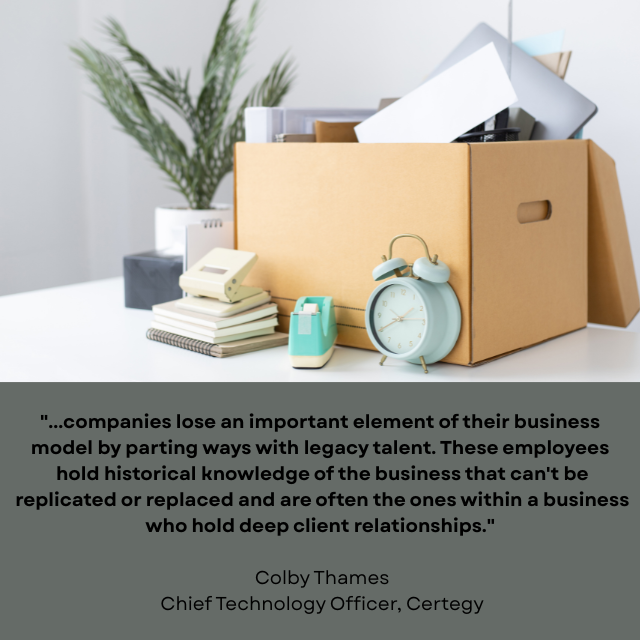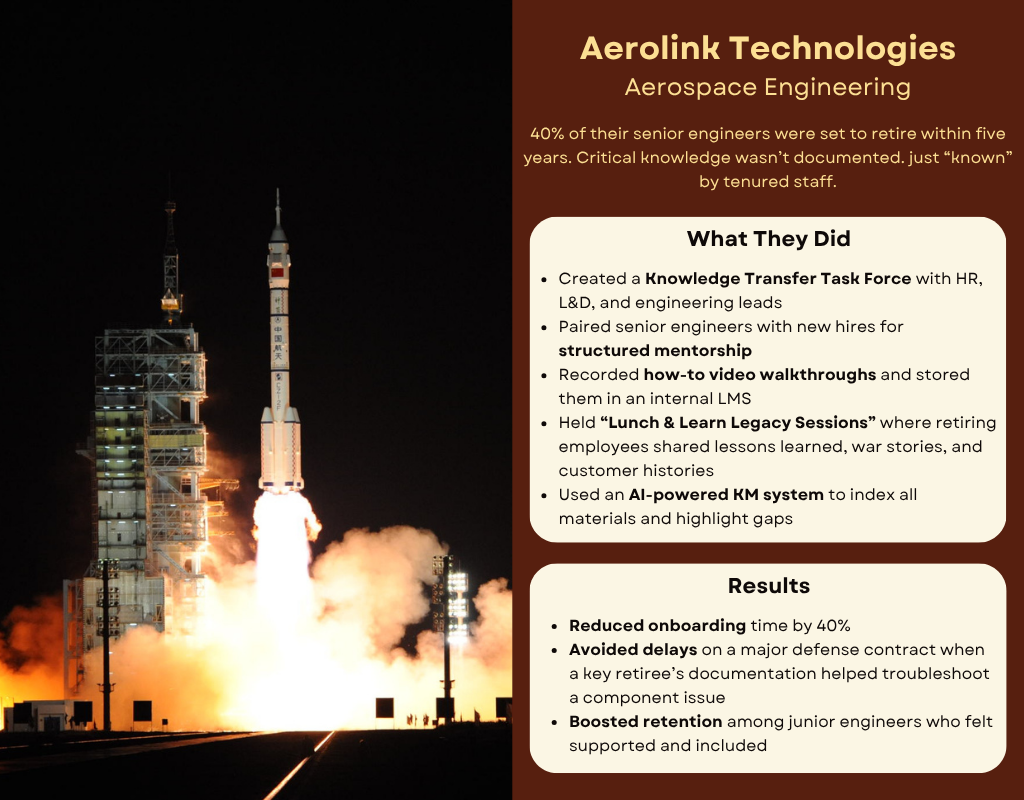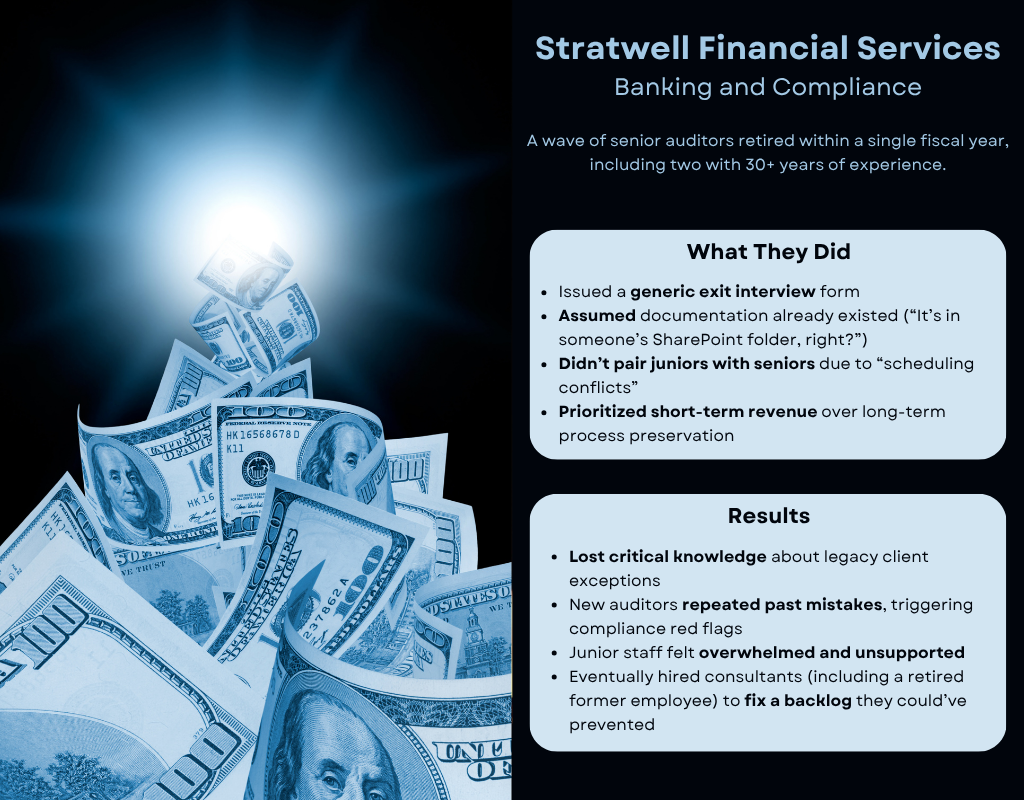- +1 (267) 368-7090
- contact@matcgroup.com
-
53 Knightsbridge Rd,
STE 216
Piscataway, NJ 08854.
When Jim started at the company, employees still faxed things. Now he’s weeks away from retiring, and half the team uses Slack emojis more fluently than email. But what Jim knows — the undocumented tricks, shortcuts, vendor relationships, and historical context — is priceless.
And fragile.
As seasoned professionals retire and younger employees move up, organizations face a critical question: How do we preserve the hard-won knowledge of one generation and pass it on effectively to the next?
This is more than succession planning. It’s a race against the clock to capture institutional knowledge before it walks out the door. According to one recent study, loss of institutional knowledge has the most negative impact on organizational problems such as morale, capability gaps, and customer satisfaction.
Here’s how to bridge the generational gap, and why it matters more than ever.
Institutional knowledge is the collective know-how that keeps things running smoothly, especially the unwritten stuff:
This knowledge lives in heads, not handbooks. And that’s the problem.
You can’t just hope people will “pass it on.” It takes intentional processes, tools, and cultural buy-in to make knowledge sharing part of how your organization operates.
Don’t wait until someone’s exit interview to start thinking about what they know. Structured plans ensure essential knowledge gets handed off, not left behind. For example:
Verbal storytelling has its place, but memory fades and people move on. Capturing knowledge in tangible formats turns tribal wisdom into accessible reference points.

Knowledge transfer is most effective when it’s a two-way street. Pairing up generations creates opportunities for wisdom-sharing and skill-swapping that benefit everyone involved:
Recognize and reward those who contribute to shared knowledge, not just those who deliver results in the moment.
Technology can’t replace human expertise—but it can help preserve it. Smart tools surface gaps, connect dots, and make knowledge easier to find when it matters most. Use AI-enhanced knowledge management platforms that can:

And here’s what happens when they don’t. Assumptions, shortcuts, and missed opportunities turned into costly setbacks—and preventable ones at that.

Capturing institutional knowledge isn’t about preserving the past—it’s about preparing for the future.
Your senior employees have stories, strategies, and skills that no system can replace. Your younger employees are ready to learn—if you give them access to that wisdom.
Bridging the generational gap isn’t just good for culture. It’s essential for continuity, innovation, and success.
Retaining Wisdom: The Value of Investing in Older Employees
Resilience in the Workplace: How Knowledge Management can Help Organizations Adapt to Uncertainty
Modern Training: The Key to Employee Engagement and Company Growth
Massingham, Peter Rex. “Measuring the impact of knowledge loss: a longitudinal study.” Journal of Knowledge Management. 2/21/18. Accessed 6/30/25. https://www.emerald.com/insight/content/doi/10.1108/jkm-08-2016-0338/full/html
Thames, Colby. “Institutional Knowledge is a Company’s Best Asset.” Forbes. 9/14/22. Accessed 6/30/25. https://www.forbes.com/councils/forbestechcouncil/2022/09/14/institutional-knowledge-is-a-companys-best-asset
Zinshteyn, Mikhail. “Age Discrimination, Caregiving and Health issues Limit Options for Older Workers.” AARP. 1/21/20. Accessed 6/30/25. https://www.aarp.org/work/age-discrimination/underemployment-traps-older-workers